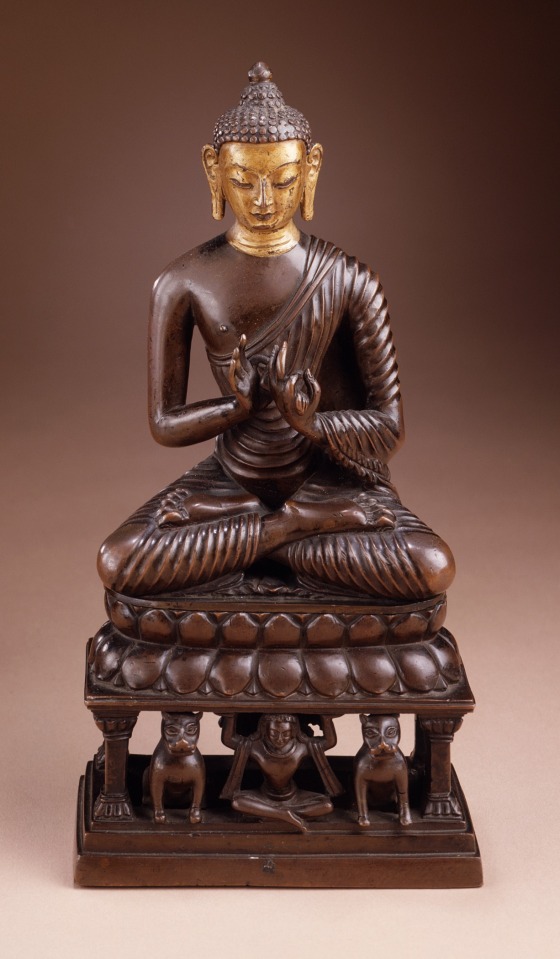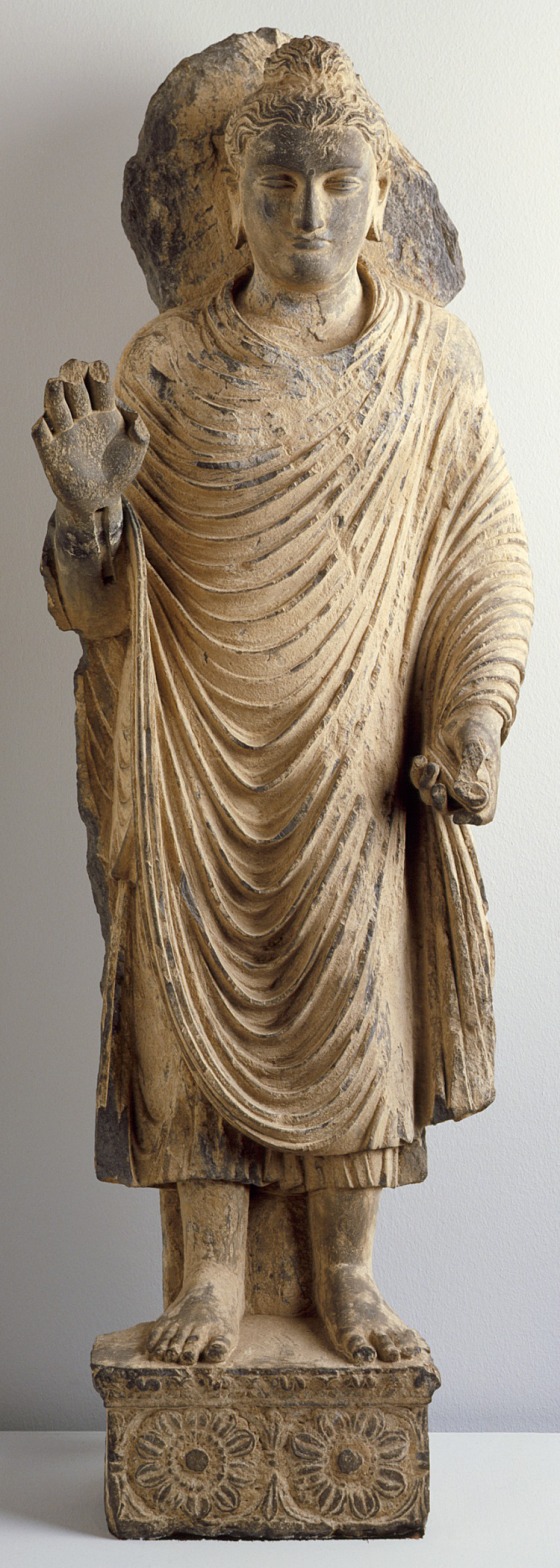Introduction
In order to identify the character of the Buddhism, this page deals with the etymological and iconographic analysis of the figure of the Buddha. Subsequently, a preview of his distribution and main division will help to have an introductory knowledge of the current situation of Buddhism. The artistic analysis of the two statues in source this section offers the occasion of some interdisciplinary and intercultural insights.
Scientific denomination:
The term "Buddhism" refers to a religion that encompasses a variety of traditions, beliefs and practices throughout Asia, largely based on teachings attributed to Siddhartha Gautama, who is commonly know nas the Buddha. "Buddha" is a Sanskrit word meaning "the awakened one" or "the enlightened one.According to Buddhist tradition, Siddhartha Gautama, after a period of asceticism and meditations, "awakened" and discovered the Truth or Law of the Things (Dharma) and started preaching it. In fact, Buddhists tend to identify themselves as the "followers of Dharma". The fundamental doctrinal core of Buddhism, virtually common to any denomination, is a path towards the elimination of ignorance and craving, in order to obtain a blissful state, free from any kind of suffering, called Nirvana. Buddhism has played a central role in the spiritual, cultural and social life of Asia, and during the 20th century it spread to the West.
Three branches of Buddhism are nowadays generally recognized:
- Theravada (Pali: "The School of the Elders") is presumably the oldest surviving branch of Buddhism. It is relatively conservative, and it is considered to be closer to early Buddhism than other existing Buddhist traditions. This branchhas a widespread following in Sri Lanka and Southeast Asia (Cambodia, Laos, Thailand, Burma, etc.)
- Mahayana (Sanskrit: "Greater Vehicle") is a movement that arose within Indian Buddhism around the beginning of the Common Era and it spread throughout East Asia (China, Korea, Japan, Vietnam, Singapore, Taiwan etc.), becoming the dominant influence of the Buddhist cultures of this region. It is characterized by different ideals of liberation, a more complex set of holy beings and various types of religious practices.
- Vajrayana (Sanskrit: "Diamond Vehicle") is a form of Buddhism that flourished in India from the 6th to the 11th century and exerted a lasting influence on the neighboring countries of India, notably Tibet and Mongolia, but it is present also in Japan. It is characterized by an emphasis on rituals and complex symbolism.
God sand other holy beings: the Historical Buddha
Historians presume that Siddhartha Gautama lived and taught in the northern part of the Indian subcontinent around the second half of the 5th century BCE. A more correct definition of him is "Historical Buddha" in order to differentiate from other holy and mythical beings, who also are revered as "Buddhas", that is, other enlightened beings. He is basically recognized by Buddhists not as a god, but as an enlightened teacher. He is however revered as a superior being, often superior to gods, to whom devotion and gratitude are to be expressed for having shared his insights to help sentient beings end their suffering.
Place of Origin
Northeasternpart of the Indian subcontinent, 5th Century BCE.
Current distribution among world population
According to most scholars of religious demographics, there are between 350 million and 1.6 billion Buddhists. 350–550 million is the most widely accepted estimate, making Buddhism the fourth-largest religion after Christianity, Islam and Hinduism. However, some scholars believe the Buddhist population exceeds 1 billion, due to the highly syncretistic nature of religious beliefs in East Asia, notably in China and Japan.
Source analysis.
- Seated Buddha: this is an image of the Historical Buddha, which is recognizable by one of his distinguishing marks: a cranial bump on his head. He is dressed in a monk’s robe, typically with one shoulder bare and he is seated on a lotus throne sustained by a central figure and two lions, symbol of the Historical Buddha. His hands' gesture (mudra) is another iconographic element typical of the Historical Buddha, and indicates that he is preaching his teaching to an audience.
- Standing Buddha: another image of the Historical Buddha. The hands' gesture (mudra)is an iconographic element typical of Buddhas: the right palm facing outwards represents protection, peace, benevolence; the left palm facing upward represent generosity and the gift of the Buddha's teaching to all sentient being.
See also intercultural & interdisciplinary information.
- Source n° 3: the map displays the regions in which the three branch of Buddhismare most prominent. interestingly enough, Buddhism, though being born in India, slowly declined due to the raising prominence of Hinduism and to the Islamic invasion of the 12th century. Buddhist practices retreated to the Himalayan foothills in the north and to Sri Lanka in the south. In nowadays India is present only as 1,5% minority.
Intercultural & interdisciplinary information
(History of Art, History)
One of the most successful styles of Buddhist sculpture in the Mahayana tradition has been the so called Gandahara Style. The region, correspondent to northern Pakistan and northeastern Afghanistan, was subject to Achaemenian Persia in the 6th and 5th centuries BCE and was conquered by Alexander the Great in the 4th century BCE. It was thereafter ruled by the Mauryan dynasty of India (3th-1st century BCE), under whom it became a center for the spread of Buddhism to Afghanistan and Central Asia. In the 1st century CE maintained contacts with Rome. In its interpretation of Buddhist sculpture the Gandhara schools incorporated many motifs and techniques from Classical Greco-Roman art, recognizable, for example, in the style of the robe and the robe's folding, as can be seen in "Standing Buddha" image, a statue from Pakistan. This style became very influential throughout all East Asia. In fact, the same folding, albeit much more stylized, can be seen also in "Seated Buddha" image, a Tibetan statue.









